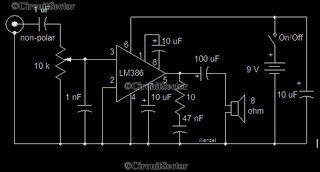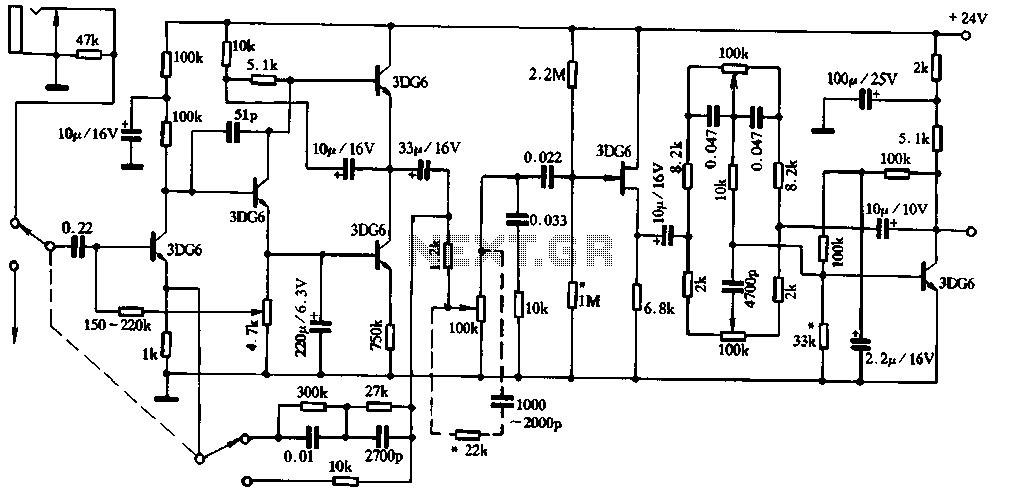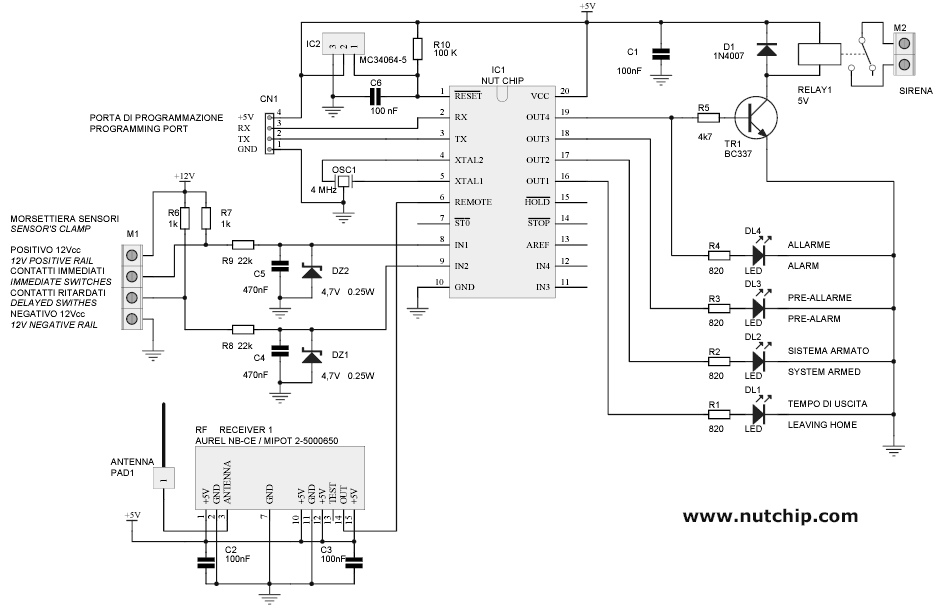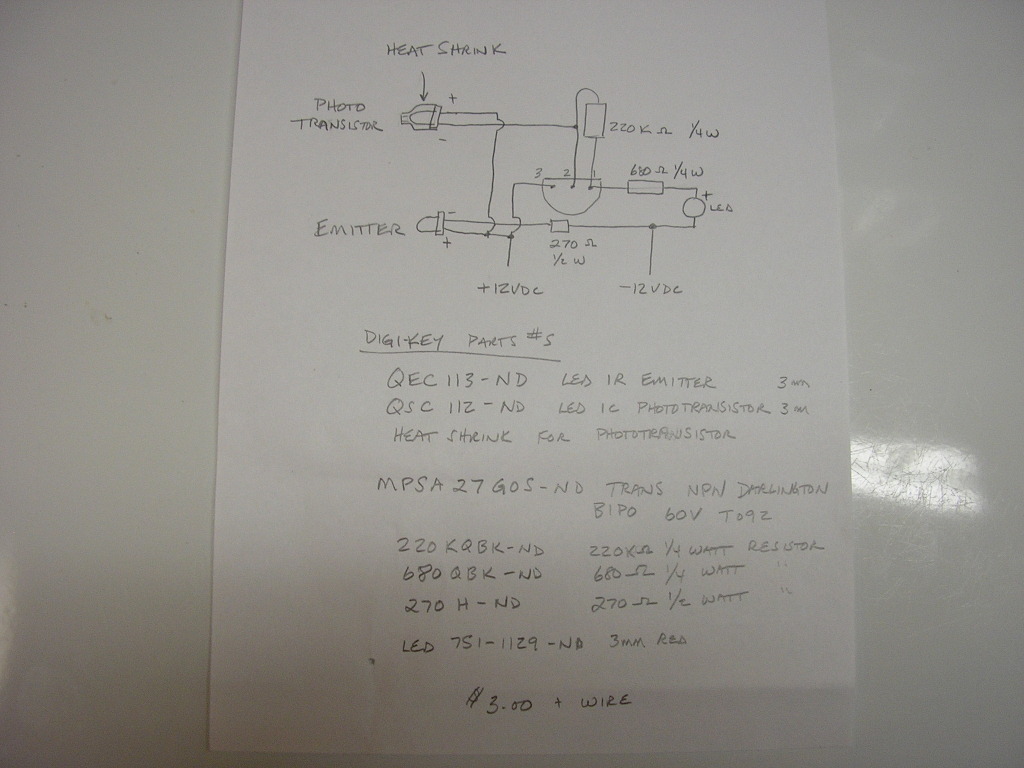
Integrated OCL power amplifier circuit composed by the TDA2040
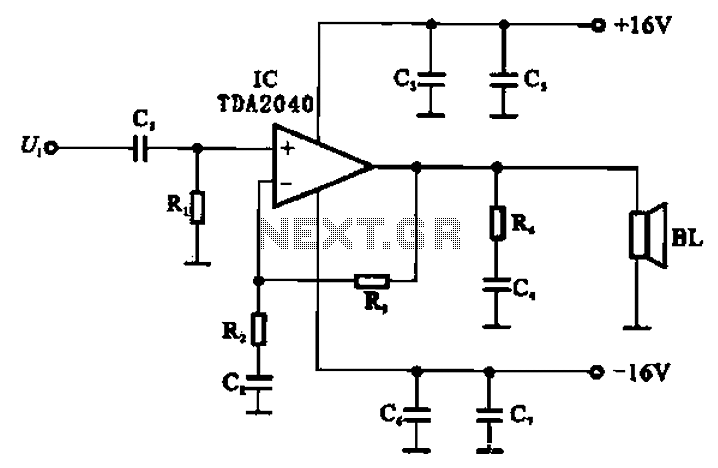
An integrated power amplifier, TDA2040 (IC), can be configured as an OCL (Output Capacitor-Less) power amplifier. The circuit, illustrated in Figure 10-10, operates using a symmetrical ±1V dual supply voltage. The OCL amplifier benefits from the positive and negative power supply, eliminating the need for an input bias circuit. The voltage gain of the circuit is determined by the resistor values R3 and R2, with the gain formula represented as A = R3/R2. Capacitors Cj, C5, C6, and C7 serve as filter capacitors for the positive and negative power supplies.
The TDA2040 is a high-performance integrated circuit designed for audio amplification applications. In this configuration, the OCL design allows for a simplified circuit layout by removing the output coupling capacitor, which is typically necessary in conventional amplifier designs. The absence of this capacitor enhances the amplifier's efficiency and reduces signal distortion, making it particularly suitable for high-fidelity audio applications.
The symmetrical ±1V dual supply provides the necessary voltage levels for optimal performance, allowing the amplifier to operate effectively without introducing biasing complications. The gain of the amplifier is adjustable through the resistors R2 and R3, enabling fine-tuning of the output signal level. This flexibility is advantageous for various applications, from consumer audio devices to professional audio equipment.
The filter capacitors Cj, C5, C6, and C7 play a crucial role in maintaining stable power supply levels. These capacitors filter out noise and voltage fluctuations, ensuring that the amplifier operates smoothly and reliably. Proper selection of these components is essential for achieving the desired performance characteristics and minimizing interference in the audio signal.
Overall, the TDA2040 OCL power amplifier configuration is an efficient and effective solution for audio amplification, combining simplicity with high performance. By an integrated power amplifier TDA2040 (lC) can also form OCL power amplifier (OCL meaning is no output capacitor power amplifier). Circuit shown in Figure 10-10, which uses symmetrical 1V dual supply as operating voltage. 0CL amplifier thanks to said positive and negative power supply, so do not need to input bias circuit. The voltage gain of the circuit is determined by the code and Rz, magnification A R3/R2. Cj and C5, C6 and C7 are positive and negative power supply filter capacitor.
The TDA2040 is a high-performance integrated circuit designed for audio amplification applications. In this configuration, the OCL design allows for a simplified circuit layout by removing the output coupling capacitor, which is typically necessary in conventional amplifier designs. The absence of this capacitor enhances the amplifier's efficiency and reduces signal distortion, making it particularly suitable for high-fidelity audio applications.
The symmetrical ±1V dual supply provides the necessary voltage levels for optimal performance, allowing the amplifier to operate effectively without introducing biasing complications. The gain of the amplifier is adjustable through the resistors R2 and R3, enabling fine-tuning of the output signal level. This flexibility is advantageous for various applications, from consumer audio devices to professional audio equipment.
The filter capacitors Cj, C5, C6, and C7 play a crucial role in maintaining stable power supply levels. These capacitors filter out noise and voltage fluctuations, ensuring that the amplifier operates smoothly and reliably. Proper selection of these components is essential for achieving the desired performance characteristics and minimizing interference in the audio signal.
Overall, the TDA2040 OCL power amplifier configuration is an efficient and effective solution for audio amplification, combining simplicity with high performance. By an integrated power amplifier TDA2040 (lC) can also form OCL power amplifier (OCL meaning is no output capacitor power amplifier). Circuit shown in Figure 10-10, which uses symmetrical 1V dual supply as operating voltage. 0CL amplifier thanks to said positive and negative power supply, so do not need to input bias circuit. The voltage gain of the circuit is determined by the code and Rz, magnification A R3/R2. Cj and C5, C6 and C7 are positive and negative power supply filter capacitor.
